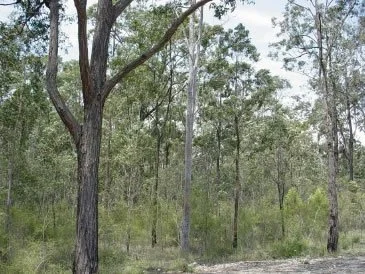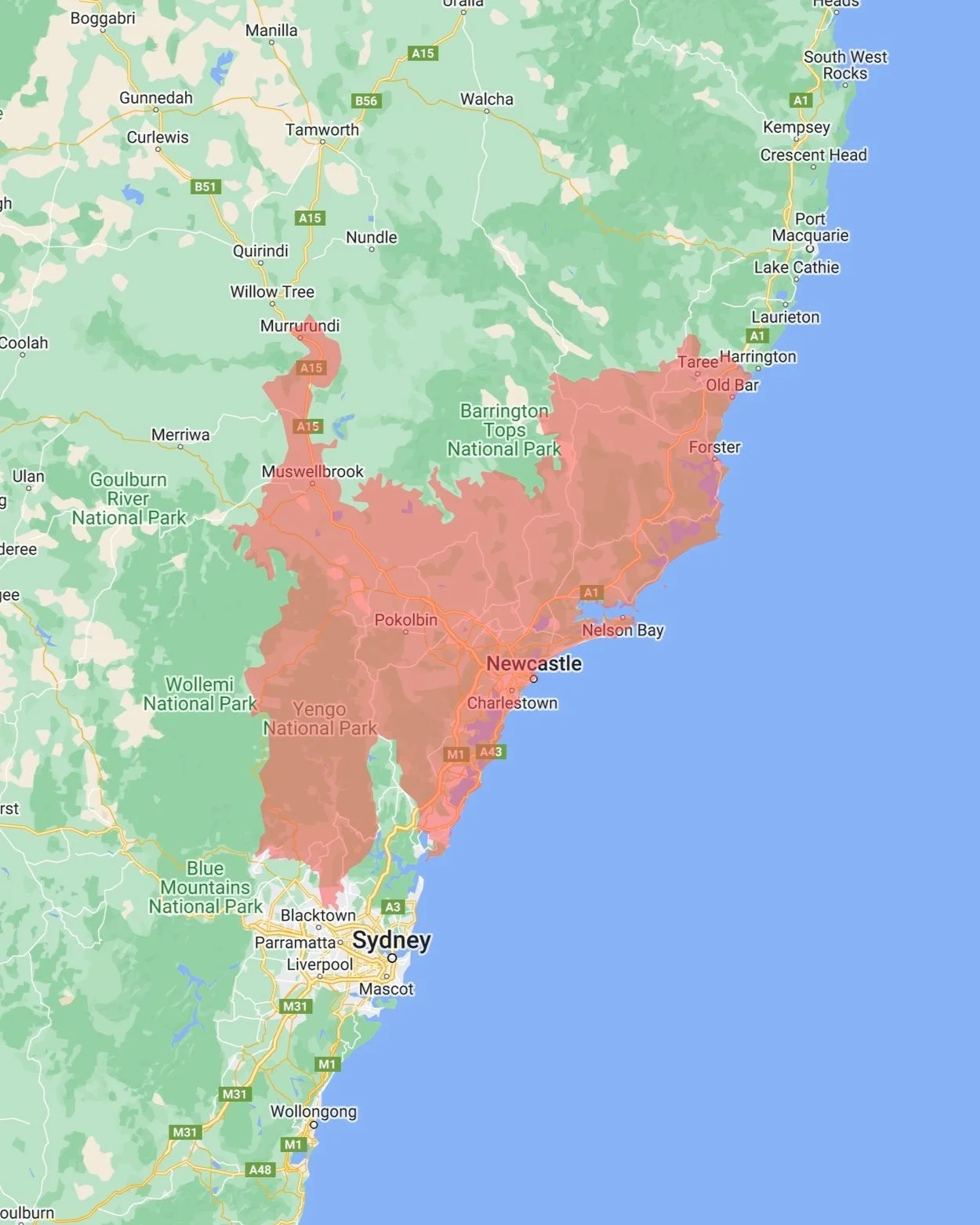Lower Hunter Spotted Gum Ironbark Forest in the Sydney Basin and NSW North Coast Bioregions
Conservation status in NSW: Endangered Ecological Community
Credits awarded for conservation and regeneration of this Threatened Ecological Community are currently in high demand by large development projects in NSW. See below on how to identify this Ecological Community on your property and actions required to generate credits.
Identification
The Lower Hunter Spotted Gum-Ironbark Forest can be identified by its key characteristics:
Tree composition: The dominant trees in this forest are Spotted Gum (Corymbia maculata) and Broad-leaved Ironbark (Eucalyptus fibrosa). Occasionally, you may come across Grey Gum (E. punctata) and Grey Ironbark (E. crebra) trees. Other eucalypt species may also be present but are less common.
Understorey vegetation: Keep an eye out for the tall shrub known as Small-leaf Wattle (Acacia parvipinnula), which is a prominent feature of this forest. Prickly shrubs like Gorse Bitter-pea (Daviesia ulicifolia), Sweet Bursaria (Bursaria spinosa), Broad-leaved Paperbark (Melaleuca nodosa), and Peach Heath (Lissanthe strigosa) can also be found. Additional shrubs include Narrow-leaf Geebung (Persoonia linearis), Silky Bark (Maytenus silvestris), and Coffee Bush (Breynia oblongifolia).
Ground layer diversity: Ground layer diversity: The forest's ground layer exhibits a diverse range of plant species. Look out for plants such as Green Rock Fern (Cheilanthes sieberi), Barbed Wire Grass (Cymbopogon refractus), Spreading Flax Lily (Dianella revoluta), Wiry Panic (Entolasia stricta), Twining Glycine (Glycine clandestina), Prickly Sword-sedge (Lepidosperma laterale), Many-flowered Mat-rush (Lomandra multiflora), Weeping Rice Grass (Microlaena stipoides), Pomaderris (Pomax umbellata), Purple Pratia (Pratia purpurascens), Kangaroo Grass (Themeda australis), and Hairy Phyllanthus (Phyllanthus hirtellus).
Forest structure: Under undisturbed conditions, the Lower Hunter Spotted Gum-Ironbark Forest typically has an open forest structure. However, if thinning or disturbance has occurred, the forest may take the form of a woodland or a dense thicket of saplings, depending on the regeneration process following the disturbance.
Location
Lower Hunter Spotted Gum Ironbark Forest is primarily centred around the Cessnock-Beresfield area in the Central and Lower Hunter Valley. Remnants of the forest can be found in various LGAs including Cessnock, Maitland, Singleton, Lake Macquarie, Newcastle, and Port Stephens. Outliers can also be observed in Pokolbin and Corrabare State Forests on the eastern escarpment of Narrabeen Sandstone.
The areas shown in pink are the sub-regions where the species or community is known to occur. They may not occur thoughout the sub-region but may be restricted to certain areas. The information presented in this map is only indicative and may contain errors and omissions.
Credit Generation
To generate credits, landholders need to implement specific management actions. These actions aim to conserve and restore the ecological community on their property. Here are the key management actions you would need to take:
Vegetation conservation: Protect existing remnant vegetation of Lower Hunter Spotted Gum Ironbark Forest on your property from clearing or degradation. This includes preventing further loss of trees and ensuring the integrity of the vegetation structure.
Invasive species control: Implement measures to control and manage invasive plant species within the Lower Hunter Spotted Gum Ironbark Forest. This involves identifying and targeting invasive plants that threaten the native flora and actively removing or controlling them.
Grazing management: Optimize grazing practices to reduce the negative impacts on the Lower Hunter Spotted Gum Ironbark Forest. Adjust stocking rates, implement rotational grazing systems, and avoid overgrazing that can lead to soil erosion and loss of native plant diversity.
Weed control: Undertake weed control activities specifically targeted at invasive plant species that compete with native vegetation within the Lower Hunter Spotted Gum Ironbark Forest. Use appropriate methods such as selective herbicide application or manual removal to minimize damage to native plants.
Regeneration and restoration: Where Lower Hunter Spotted Gum Ironbark Forest remnants have been degraded or lost, actively restore and regenerate the native vegetation. This may involve planting native trees, shrubs, and grasses, and ensuring their ongoing care and maintenance.
Habitat protection: Pay attention to the conservation of habitat features crucial for supporting wildlife within the Lower Hunter Spotted Gum Ironbark Forest. This includes preserving fallen timber, providing habitat for nesting or roosting birds, and maintaining diverse vegetation layers.
Monitoring and reporting: Regularly monitor the condition of the Lower Hunter Spotted Gum Ironbark Forest on your property and document the outcomes of your management actions. This monitoring helps track the progress of conservation efforts and ensures compliance with the requirements of the Biodiversity Offset Scheme.
By implementing these management actions, you will contribute to the conservation and restoration of the Lower Hunter Spotted Gum Ironbark Forest. These actions will help generate biodiversity credits, which can be traded to offset biodiversity impacts from developments and provide financial incentives to support the ongoing management of the ecological community on your farm.


